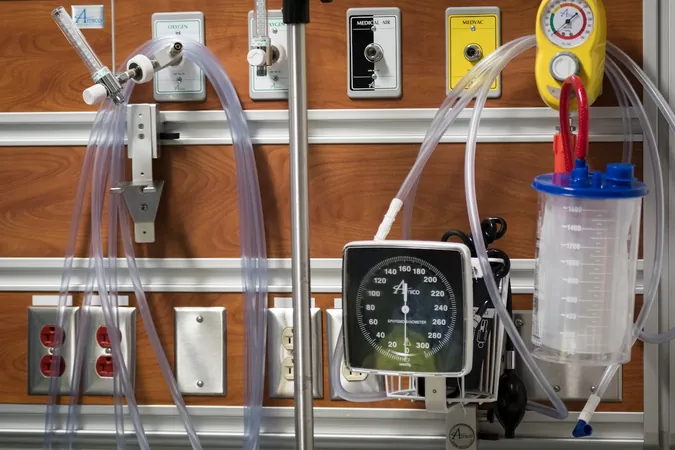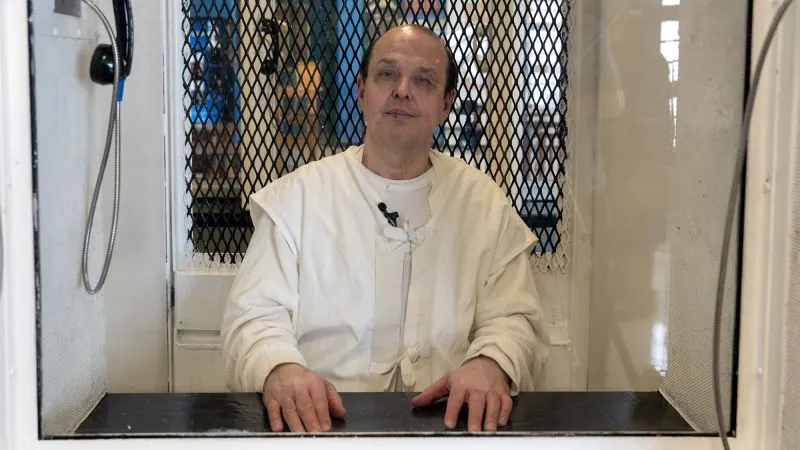
Walking Pneumonia on the Rise in Canada: Symptoms, Risks, and Why You Shouldn't Panic
2024-11-12
Author: Sophie
Walking Pneumonia on the Rise in Canada: Symptoms, Risks, and Why You Shouldn't Panic
Walking pneumonia, largely kept at bay during the COVID-19 pandemic, has made a comeback, with a notable increase in cases reported across Canada, especially among children. This resurgence coincides with a global trend observed by the U.S. Centers for Disease Control and Prevention (CDC) and has prompted health professionals to sound the alarm, albeit with a message of reassurance.
Dr. Allan Grill, the chief of family medicine at Markham Stouffville Hospital, emphasizes that there's no need for panic. “This isn’t about fear; it’s about awareness,” he stated. He encourages parents to consult their primary-care providers if they suspect their children might be affected.
Understanding Walking Pneumonia: The Basics
Walking pneumonia, medically known as mycoplasma pneumonia, is a respiratory tract infection caused by mycoplasma bacteria. Typically presenting as a mild condition akin to a chest cold—also referred to as tracheobronchitis—this infection has the potential to escalate into more serious lung infections like pneumonia.
It spreads through respiratory droplets, which means you can contract it by breathing in droplets expelled by an infected person who sneezes or coughs. While casual contact typically doesn’t pose a high risk, prolonged exposure can increase your chances of infection.
Symptoms to Watch For
The primary symptoms associated with walking pneumonia include:
- Sore throat
- Coughing
- Fatigue
- Headache
- Fever
In a small subset of severe cases, complications can arise, leading to symptoms such as shortness of breath or persistent high fevers. Young children under five may present with additional symptoms like diarrhea, sneezing, vomiting, and wheezing, making early detection in this age group crucial.
Why Is It Called Walking Pneumonia?
The term "walking pneumonia" reflects the mildness of the illness; most individuals feel well enough to go about their daily activities, despite being infected. According to Dr. Warren Thirsk, an emergency medicine physician in Edmonton, walking pneumonia is significantly less severe than other respiratory illnesses such as COVID-19 or influenza.
Seek medical attention if your child experiences a fever lasting more than five days or if symptoms persist beyond three weeks.
At-Risk Populations and Outbreak Trends
Dr. Earl Rubin from Montreal Children’s Hospital has noted a concerning increase in cases among toddlers, a demographic traditionally less affected by this bacterium. High-risk groups, such as individuals with compromised immune systems or those recovering from other respiratory illnesses, are particularly vulnerable.
Crowded settings like schools and nursing homes are prime areas for outbreaks. The contagion can linger due to the bacteria's long incubation period, which can range from one to four weeks, allowing it to spread before detection.
Is There a Reason for Concern?
Experts speculate that this spike might be due to lower immunity levels in the population post-pandemic. With fewer individuals having contracted walking pneumonia previously, larger groups may now find themselves susceptible. The bacteria can infect up to one in three individuals in a household, making vigilance crucial.
The CDC noted a significant increase in cases in spring, particularly in children, with peak occurrences recorded in August. Since then, those numbers have remained elevated.
Effective Treatments Available
Doctors can confirm the presence of walking pneumonia through simple tests involving nasal or throat swabs, which are analyzed in a laboratory. Identification is key since treatment requires antibiotics specifically targeted towards mycoplasma. Traditional antibiotics for standard pneumonia, like amoxicillin, are ineffective here due to the distinct characteristics of mycoplasma.
Instead, macrolides tend to be recommended as they successfully combat this bacterial infection. Dr. Camille Lemieux, chief of family medicine at the University Health Network in Toronto, has observed this uptick in cases as unprecedented in her practice spanning three decades.
The Current Landscape in Canada
While detailed statistics on walking pneumonia in Canada are not officially tracked, anecdotal evidence from healthcare facilities in Ontario, Quebec, and British Columbia points to an increase in cases. BC Children's Hospital reports a noticeable rise in emergency visits due to walking pneumonia, which had seemingly vanished for years prior to this spike. Dr. Jeffrey Pernica of McMaster Children's Hospital has seen similar trends since early summer.
The good news is that as winter approaches, the incidence of walking pneumonia may begin to decline.
In conclusion, while the increase in walking pneumonia cases deserves attention, increased awareness and timely medical consultations can effectively manage the condition. Remember, preparedness and knowledge are your best defenses!









 Brasil (PT)
Brasil (PT)
 Canada (EN)
Canada (EN)
 Chile (ES)
Chile (ES)
 España (ES)
España (ES)
 France (FR)
France (FR)
 Hong Kong (EN)
Hong Kong (EN)
 Italia (IT)
Italia (IT)
 日本 (JA)
日本 (JA)
 Magyarország (HU)
Magyarország (HU)
 Norge (NO)
Norge (NO)
 Polska (PL)
Polska (PL)
 Schweiz (DE)
Schweiz (DE)
 Singapore (EN)
Singapore (EN)
 Sverige (SV)
Sverige (SV)
 Suomi (FI)
Suomi (FI)
 Türkiye (TR)
Türkiye (TR)